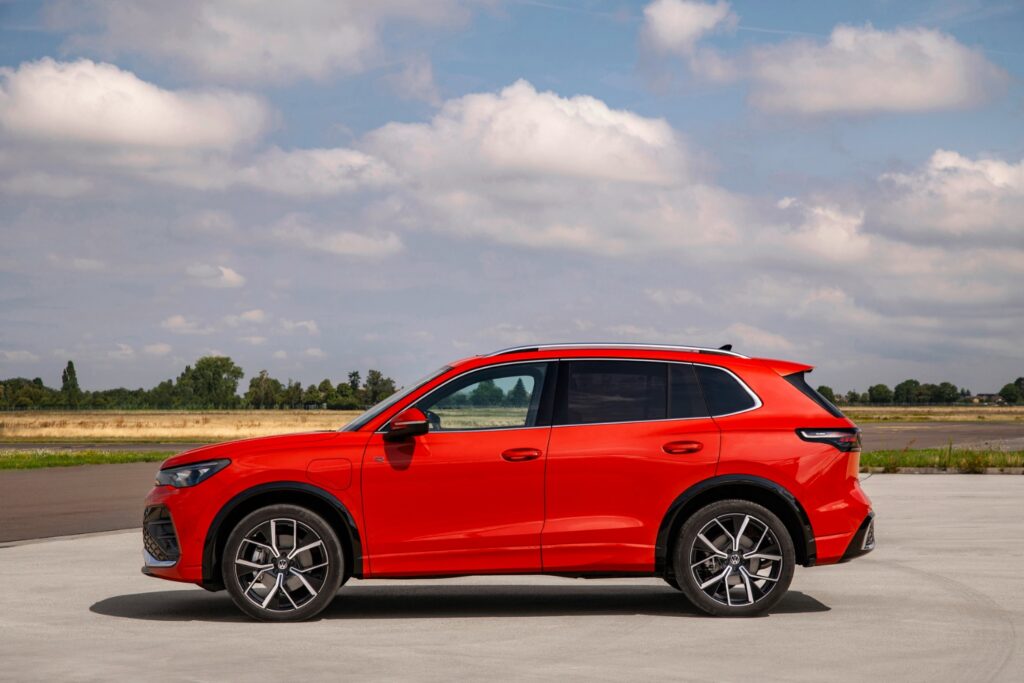Volkswagen has just announced the opening of orders for the new Tiguan in the European market, one of the most successful models of the German brand, with over 7.6 million units sold since its launch in 2007.
The new generation, the third one, which will arrive in the market in the first quarter of 2024, is based on the latest evolution of the MQB platform, therefore called MQB-Evo, and allows the new Tiguan to be slightly larger than its predecessor, with 4.55 meters in length (+32 mm), 1.83 meters in width (same) and 1.64 meters in height (+5 mm). The wheelbase has not changed and remains at 2.68 m.

Although the dimensions have not undergone major changes, the truth is that the Tiguan has seen the luggage capacity increase by 33 liters, to 648 liters.
Aesthetically, the new Tiguan features a completely new design, with emphasis on the front, which has a more muscular look, with very flat LED headlights and a horizontal strip of light that runs across the entire front. The radiator grille openings are now located on the outer sides of the fenders, where the air intakes ensure air circulation. The clean front design has improved the aerodynamic resistance coefficient from 0.33 to 0.28.
On the side, the highlights are the wheels up to 20”, while at the rear, the taillights are connected by a LED light strip.
Inside, the highlight goes to the new 10.25″ instrument panel and the infotainment system, with a standard 12.9″ screen or an optional 15″ screen, installed in a completely redesigned dashboard with horizontal air vents. Also optional are the four-way pneumatic lumbar support adjustment and the ergoActive front seats’ massage, heating, and ventilation functions.

The new technological developments made possible by the MQB platform allow the new Tiguan to have independent four-wheel suspension, MacPherson type at the front and multilink at the rear. As an option, it can receive the DCC Pro pilot-controlled damping system, with the XDS electronic differential and the Vehicle Dynamics Manager system being standard.
Regarding the engines, the biggest novelty are the new plug-in hybrid engines, which benefit from a battery with about twice the capacity, 19.7 kWh, allowing a 100% electric range of about 100 km and being able to receive not only fast charging up to 50 kW but also be fully charged in about 2 hours in a Wallbox or public charging station, thanks to the 11 kW onboard charger.

In terms of offerings, Volkswagen will make available two plug-in hybrid versions, both with front-wheel drive and combined with an automatic gearbox, with a selector installed on the steering column, which combine a 1.5-liter turbocharged gasoline four-cylinder engine with an electric unit capable of delivering a combined power of 204 hp or 272 hp.
The range of engines for the new Tiguan also includes a 48V mild hybrid, with two gasoline eTSI variants of 2.0 or 1.5, with power outputs of 150 hp and 130 hp respectively, and featuring a variable geometry turbo, cylinder deactivation system, and DSG seven-speed gearboxes.

The new generation Tiguan is also the last to be offered with internal combustion engines, at least in Europe, and for this it features the 2.0 TSI gasoline engine with 204 hp and 320 Nm of maximum torque, and another version with 265 hp of power and 400 Nm of torque. The diesel versions are equipped with the 2.0 TDI diesel engine with 150 hp and 360 Nm of maximum torque, as well as 193 hp of power and 400 Nm of torque. The more powerful versions are equipped with 4Motion all-wheel drive, and all with a seven-speed automatic transmission.







